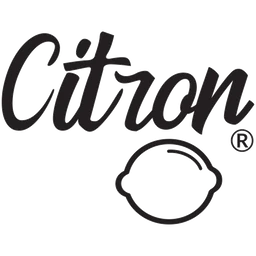Keeping your kids’ lunchbox germ-free is crucial for their health and well-being. Lunchboxes can become a breeding ground for bacteria, especially when they contain perishable food or are not cleaned thoroughly on a daily basis. By adopting effective cleaning habits, you can ensure your child’s lunch remains fresh and safe.
Why is Cleanliness Important for Lunchboxes?
Lunchboxes, by nature, experience exposure to food spills, crumbs, and moisture. When left unattended, these elements create the perfect environment for bacteria to thrive.
From the leftover ketchup stain to the residue of a juice spill, even minor mishaps can harbour harmful microorganisms. These germs could potentially lead to illnesses, such as food poisoning or stomach upset, and, in some cases, even spread to other surfaces in your home. Prioritising cleanliness helps maintain hygiene and also teaches kids the importance of taking care of their belongings.
Daily Cleaning Routine
One of the easiest ways to keep a علبة الغداء germ-free is by cleaning it daily. Follow these simple steps:
- Empty the Lunchbox: Once your child returns home, empty the lunchbox right away. Discard any leftover food and take out reusable containers, utensils, and ice packs.
- Rinse Thoroughly: For soft-sided lunchboxes, give them a good shake to remove crumbs. Then rinse the interior and exterior with warm water to get rid of surface grime.
- Wash with Soap: Use mild dish soap and a sponge or soft cloth to scrub the lunchbox’s surfaces. Focus on the seams and corners, where crumbs or residue may accumulate. For hard plastic containers, wash as you would ordinary dishes.
- Rinse Again: After scrubbing off the soap, rinse thoroughly with clean water to ensure no detergent lingers on the material.
- Dry Completely: Allow the lunchbox to air dry completely before reassembling it or storing it away. Moisture trapped in a closed lunchbox can encourage mould growth.
Deep Cleaning Tips
While daily cleaning is essential, lunchboxes should also be thoroughly cleaned weekly for optimal sanitation. Here’s a guide to effective deep cleaning:
- Wash in the Dishwasher (if applicable): Many lunchboxes and containers are dishwasher-safe. Check the care instructions to confirm. Running a lunchbox through a dishwasher on a sanitising cycle can provide efficient cleaning.
- Use Baking Soda for Odours: Sprinkle a small amount of baking soda inside the lunchbox, particularly in areas where odors persist. Scrub gently with a damp sponge, then rinse thoroughly.
- Sanitise with Vinegar: White vinegar acts as a natural disinfectant. Mix equal parts vinegar and water, then wipe down the lunchbox. This method is particularly effective at removing stubborn bacteria.
- Spot-Treat Stains: For any stains that don’t come off during regular washing, try a paste made of baking soda and water. Rub the paste into the stain and leave it to sit for a few minutes before rinsing. Alternatively, a gentle scrub with a toothbrush and mild soap can help tackle discolouration.
Choosing the Right Materials
Materials such as BPA-free plastic, stainless steel, or silicone are easier to clean and less likely to harbour bacteria. Hard-sided lunchboxes are generally simpler to wipe down compared to soft-sided ones, though the latter can often be machine-washed.
When purchasing reusable items like food containers and utensils, opt for designs that are both leak-proof and easy to clean. Avoid items with excessive grooves or hard-to-reach crevices where food can get stuck.
Preventing Germs from Accumulating
Prevention is always better than cure. Here are some habits to adopt to reduce the accumulation of germs in your child’s lunchbox:
- Pack Non-Perishable Foods: If possible, avoid packing foods that need refrigeration, as these can spoil quickly if left at room temperature. If perishable foods are a must, always include an ice pack to keep them fresh.
- Use Removable Liners: Liners protect the inside of the lunchbox and help catch spills. Opt for easily washable or disposable liners that can be replaced after each use.
- Communicate with Your Child: Teach your child to dispose of leftovers and any wrappers or napkins at school before returning home. Encourage them to alert you to spills or leaks.
- Store Lunchboxes Correctly: When not in use, store lunchboxes in a dry, ventilated space to prevent moisture buildup and musty odours.
Eco-Friendly Cleaning Options
If you’re looking for an eco-friendly approach, plenty of options are available:
- Natural Cleaners: Skip harsh chemicals and opt for natural cleaning agents, such as vinegar, lemon juice, and baking soda. These are safe, affordable, and highly effective.
- Reusable Cleaning Cloths: Instead of disposable paper towels, use microfiber cloths or other washable cloths for wiping down lunchboxes. These can be reused multiple times, reducing waste.
- DIY Disinfectants: Create your own disinfectant spray using equal parts water and white vinegar, plus a few drops of your favourite essential oil for a pleasant scent. This solution is non-toxic and child-safe.
Don’t Forget the Extras
Often overlooked, other items that come into contact with your child’s lunch should also be cleaned regularly. Utensils, water bottles, and cloth napkins all need the same level of attention. Wash these items daily, and replace them as soon as they show signs of wear or damage. Water bottles, in particular, can harbour harmful bacteria if not cleaned thoroughly, especially in the lid or spout area.
While it may seem like extra effort, maintaining your kid’s lunchbox hygiene is well worth it to keep them healthy and safe. By instilling these habits early on, you also help your child learn the value of cleanliness and responsibility. With a little care and regular upkeep, your kid’s lunchbox can remain a safe, germ-free environment for their meals, helping them stay fuelled and ready for the day ahead!

